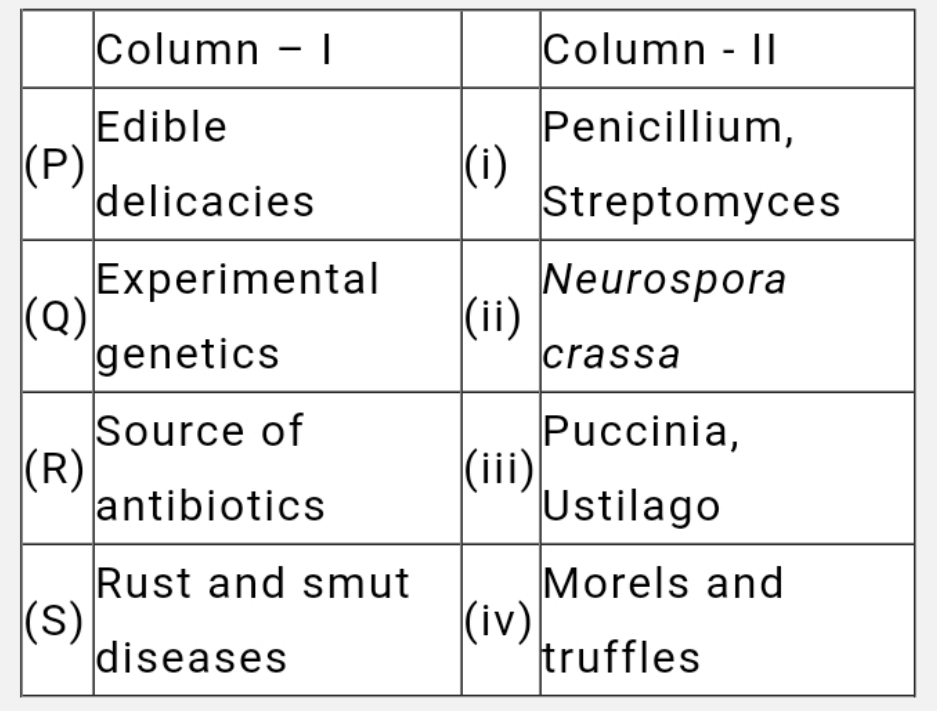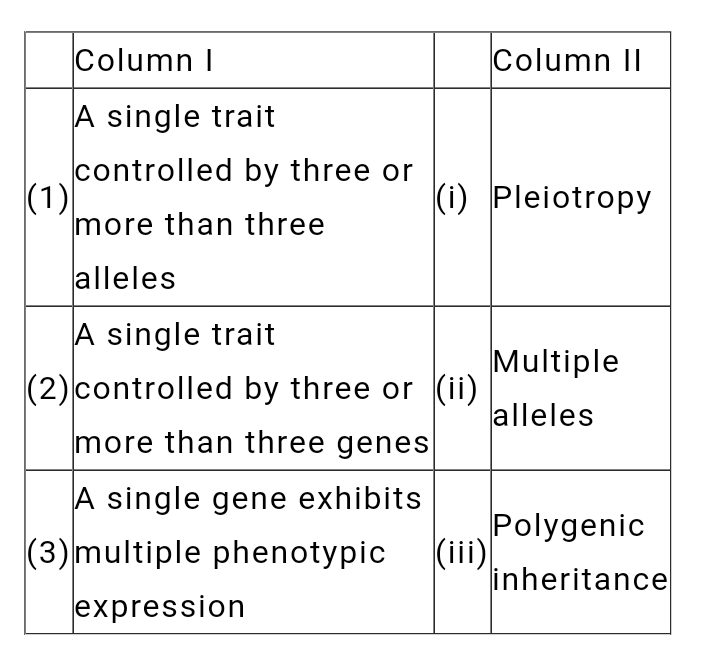Match Column - I with Column - II and Select the CORRECT option from the codes given below .
Column IColumn II1Monera(i)Chlamydomonas Solanum2Protista(ii)Bacillus, Ocillatoria3Fungi(iii)Euglena, Trypanosome4Plantae(iv)Mucor, Penicillium5Animalia(v)Felis , Panthera
1 - (iii) , 2 - (ii) , 3 - (iv) , 4 - (i) , 5 - (v)
1 - (ii) , 2 - (iii) , 3 - (iv) , 4 - (i) , 5 - (v)
1 - (ii) , 2 - (iii) , 3 - (i) , 4 - (iv) , 5 - (v)
1 - (ii) , 2 - (v) , 3 - (i) , 4 - (iv) , 5 - (iii)
The correct Answer is:B
To solve the matching question, we will analyze each item in Column I and find the correct corresponding item in Column II.
1. Monera:
- Monera consists of prokaryotic organisms, primarily bacteria.
- The examples given in Column II are Bacillus and Oscillatoria, which are both bacteria.
- Match: Monera (1) → Bacillus, Oscillatoria (ii)
2. Protista:
- Protista includes unicellular eukaryotic organisms.
- The examples provided are Euglena and Trypanosome, which are indeed unicellular eukaryotes.
- Match: Protista (2) → Euglena, Trypanosome (iii)
3. Fungi:
- Fungi are typically saprophytic or heterotrophic organisms.
- The examples listed are Mucor and Penicillium, which are both types of fungi.
- Match: Fungi (3) → Mucor, Penicillium (iv)
4. Plantae:
- Plantae includes all plants, including algae.
- The examples given are Chlamydomonas (a type of green algae) and Solanum (the genus that includes potatoes).
- Match: Plantae (4) → Chlamydomonas, Solanum (i)
5. Animalia:
- Animalia encompasses all animals.
- The examples provided are Felis (the genus for cats) and Panthera (the genus for big cats like tigers).
- Match: Animalia (5) → Felis, Panthera (v)
Final Matching:
- 1 → ii (Monera → Bacillus, Oscillatoria)
- 2 → iii (Protista → Euglena, Trypanosome)
- 3 → iv (Fungi → Mucor, Penicillium)
- 4 → i (Plantae → Chlamydomonas, Solanum)
- 5 → v (Animalia → Felis, Panthera)
Conclusion:
The correct matches are:
1. Monera → ii
2. Protista → iii
3. Fungi → iv
4. Plantae → i
5. Animalia → v
- Monera consists of prokaryotic organisms, primarily bacteria.
- The examples given in Column II are Bacillus and Oscillatoria, which are both bacteria.
- Match: Monera (1) → Bacillus, Oscillatoria (ii)
- Protista includes unicellular eukaryotic organisms.
- The examples provided are Euglena and Trypanosome, which are indeed unicellular eukaryotes.
- Match: Protista (2) → Euglena, Trypanosome (iii)
- Fungi are typically saprophytic or heterotrophic organisms.
- The examples listed are Mucor and Penicillium, which are both types of fungi.
- Match: Fungi (3) → Mucor, Penicillium (iv)
- Plantae includes all plants, including algae.
- The examples given are Chlamydomonas (a type of green algae) and Solanum (the genus that includes potatoes).
- Match: Plantae (4) → Chlamydomonas, Solanum (i)
- Animalia encompasses all animals.
- The examples provided are Felis (the genus for cats) and Panthera (the genus for big cats like tigers).
- Match: Animalia (5) → Felis, Panthera (v)
- 1 → ii (Monera → Bacillus, Oscillatoria)
- 2 → iii (Protista → Euglena, Trypanosome)
- 3 → iv (Fungi → Mucor, Penicillium)
- 4 → i (Plantae → Chlamydomonas, Solanum)
- 5 → v (Animalia → Felis, Panthera)
The correct matches are:
1. Monera → ii
2. Protista → iii
3. Fungi → iv
4. Plantae → i
5. Animalia → v
Similar Questions
Knowledge Check
- Question 1 - Select One
Match column I with II column II and select the correct option from the given codes .
 AA-(ii), B-(iii), C-(iv), D-(i)BA-(iii), B-(ii), C-(i), D-(iv)CA-(iii), B-(ii), C-(iv), D-(i)DA-(i), B-(ii), C-(iii), D-(iv)
AA-(ii), B-(iii), C-(iv), D-(i)BA-(iii), B-(ii), C-(i), D-(iv)CA-(iii), B-(ii), C-(iv), D-(i)DA-(i), B-(ii), C-(iii), D-(iv)
Match Column - I with Column -II and select the correct option using the codes given below
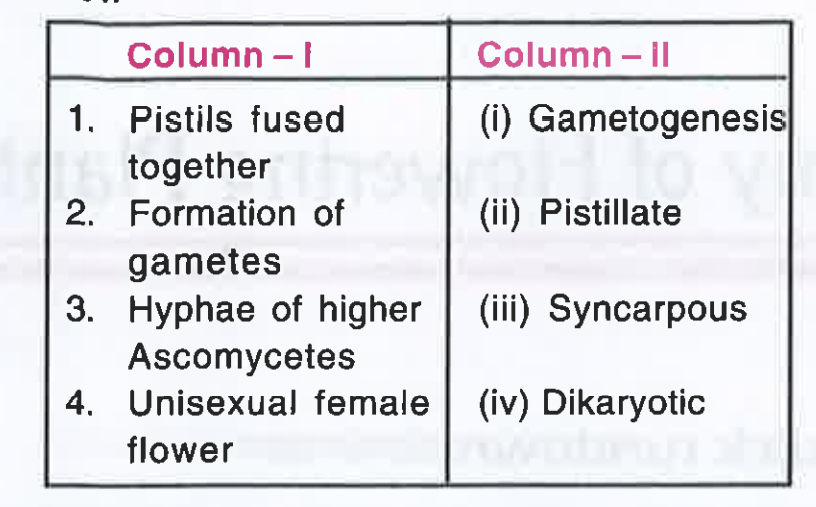 View Solution
View SolutionMatch Column-I with Column -II and select the correct option using the codes given below
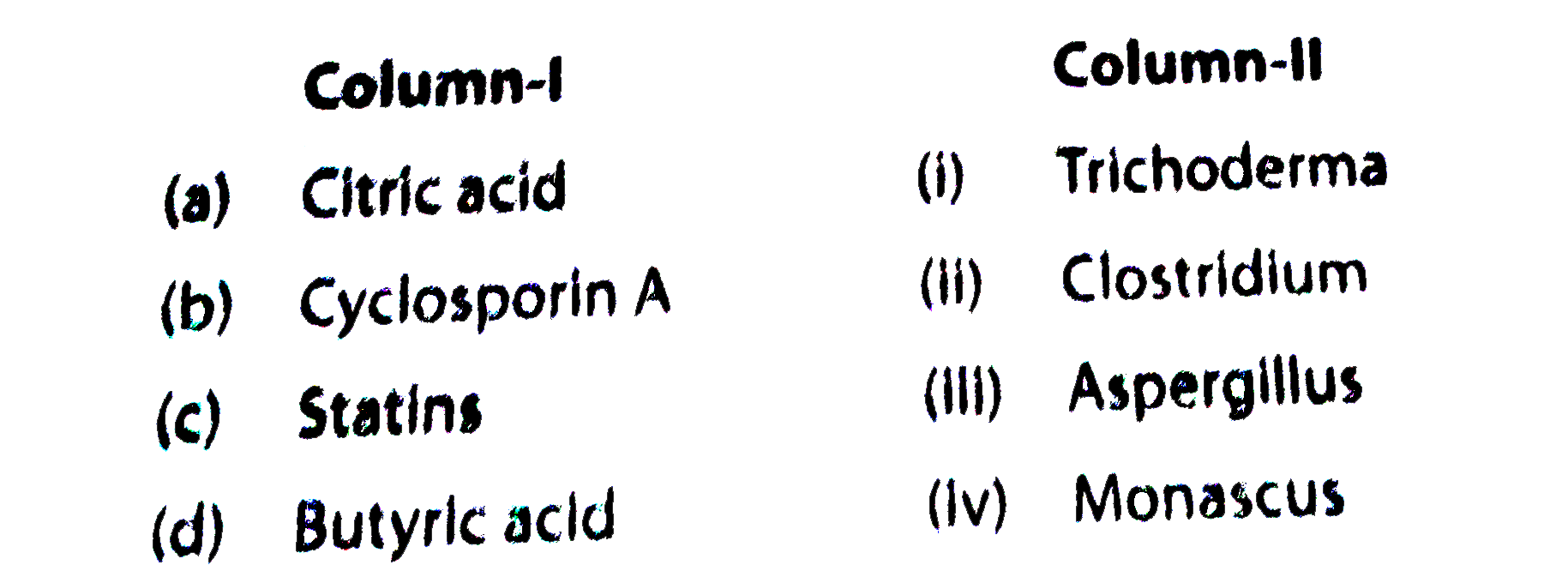 View Solution
View SolutionMatch Column I with Column II and select correct option from the codes given below.
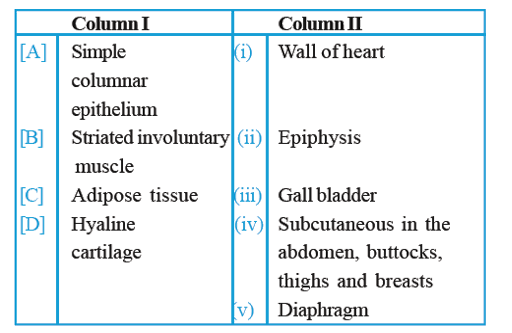 View Solution
View SolutionMatch Column-I with Column-II and select the correct option using the codes given below.
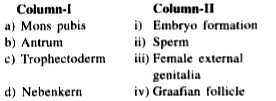 View Solution
View SolutionMatch Column-I with Column-II and select the correct option using the codes given below
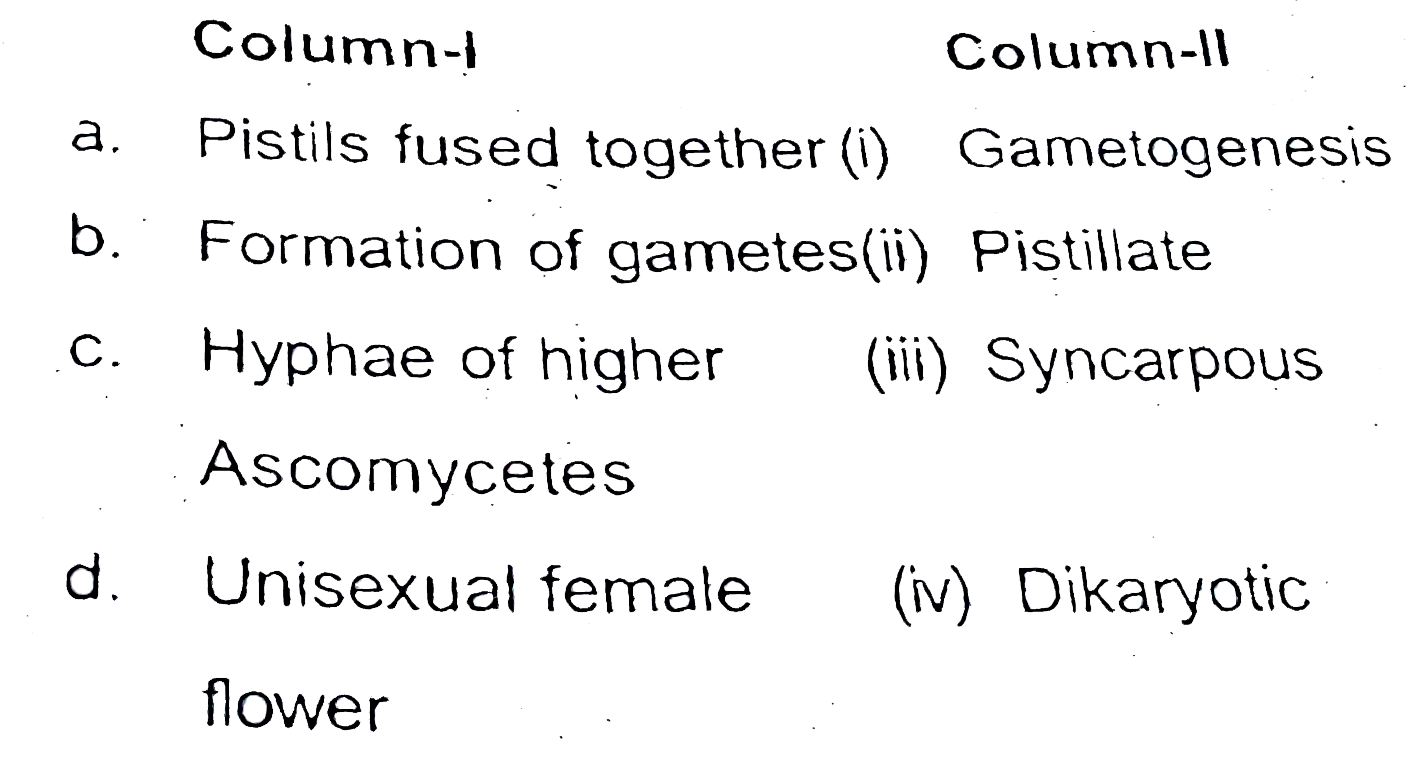 View Solution
View SolutionMatch column I with column II and select the correct option using the codes given below:
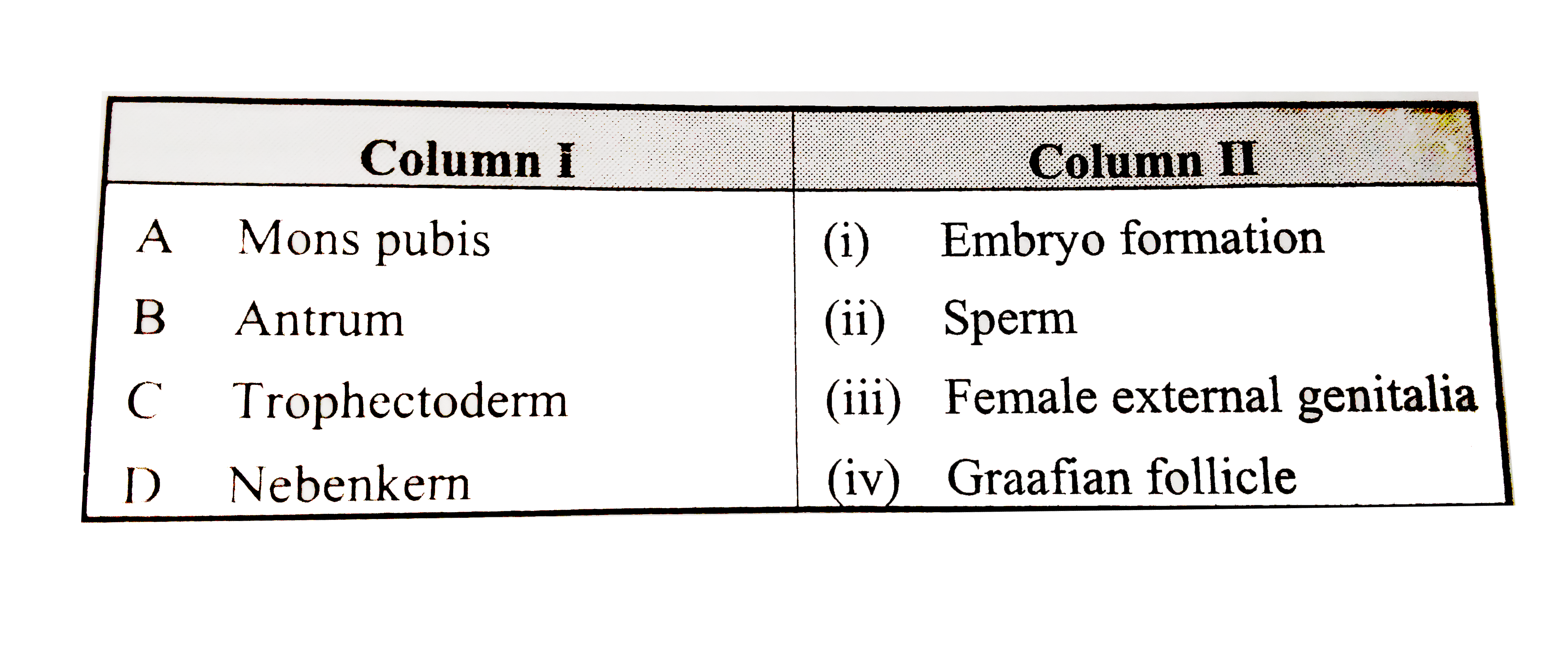 View Solution
View SolutionMatch Column-I with Column-II and select the correct answer using the code given below the Columns
 View Solution
View Solution


